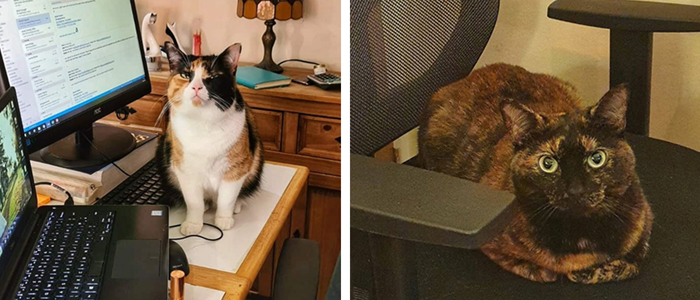"To boldly go where no IHW staff member has gone before" A PhD by published works
Published: 21 September 2020
IHW and Mental Health and Wellbeing's Joey Ward describes the still relatively unusual pathway to turning an already published body of work into a PhD thesis
"I needed a PhD but love spending money on fancy holidays: how I accomplished both by doing a PhD by published works."
IHW and Mental Health and Wellbeing's Joey Ward describes the still relatively unusual pathway to turning an already published body of work into a PhD.
I started working as a research assistant in 2015 under Prof Daniel Smith and I knew that to stay in research I would really need to complete a PhD but wasn’t too keen on paying annual PhD fees. IHW colleague Donald Lyall told me about PhD by published works which looked a lot more promising as you only had one payment when you submitted.
However, to do a PhD by publication, I needed a minimum of 5 years continuous service and 5 published papers along a similar theme, which I had made a significant contribution to. Over the following years I developed several genetic analysis pipelines to analyse a variety of phenotypes focused primarily in the UK Biobank cohort.
Papers
My submitted papers were: (1) looking at how genetic loading of neuroticism and major depressive disorder affects antidepressant response using polygenic risk scoring; (2) and (3) analysed the same phenotype - that of mood instability - the methodologies, sample sizes and downstream analyses differed; (4) a genetic investigation into an ordered ordinal suicidality and self-harm phenotype; (5) investigating the genetics of anhedonia and its correlation with brain structure.
Thesis
To combine the papers into a thesis I wrote an introduction describing underlying concepts and methodologies used throughout the thesis and discussion section examining how the methodologies had improved over the 5 papers and what challenges this overcame.
Submission
Prior to submission, you need to set out a prima facie case that your work merits a PhD including detailing how you contributed to each paper. I used papers on which I was first, or joint first author and that I had designed and written the code to run the analyses. This needs to be signed off by the other authors for each paper to stop you passing off other people’s work as your own. Once the prima facie case was accepted, I needed to register for the course. As no one had done this before, this took quite a while as they had to create a new course code (Covid and lockdown didn’t help either). Following registration, I was assigned a supervisor to independently review the thesis before I submitted.
The viva
I really enjoy working as a researcher and to be able to get a PhD by doing my job is a real bonus.
Due to Covid, my viva was over zoom, sitting in my spare room with my cats (Instagram: @moggysistas) for moral support. The examiners went through each paper and we discussed points about the methods used, technical challenges, etc to make sure I knew what I had done and not just run a bunch of programs and stuck the outputs in a paper. Since the work had already been published it had already been peer reviewed. I only had minor corrections to the thesis, which were mainly formatting.
Overall experience
There are positives and negatives compared to doing a traditional PhD. As I was always working towards publishing a paper I didn’t have time to explore the phenotypes in detail, or compare and contrast different methodologies to any great extent as you would with a traditional PhD. A major benefit is I was only being examined on a small proportion of the work I’d done over the last 5 years and not the entire body of work I had done over the course of a PhD. I really enjoy working as a researcher and to be able to get a PhD by doing my job is a real bonus. The trickiest part is staying funded for five years.

Joey Ward (Research Assistant)
Mental Health and Wellbeing
PhD based on publications: guidance and existing policies (HAWKEYE, February 2020)
First published: 21 September 2020
- Joey Ward profile
- PhD based on publications: guidance and existing policies
- ECR Athena SWAN working group
- ECR forum

